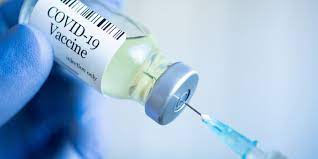Coronavirus Vaccine; What’s Going On?

May 11, 2021
COVID-19 has taken the entire world by storm. Sadly, the new norm for the past year and a half has been mask-wearing, social distancing, and staying at home. Travel has slowed rapidly, dine-in restaurants are going out of business, and our parents’ co-workers are hearing our Google Meet sounds in the background. Hope began to develop in late December when healthcare workers got the very first dose of the COVID-19 Pfizer/BioNTech Vaccine. In a short, but long-awaited three months, more pharmaceutical companies have put out a wider variety of the vaccine. Moderna and Johnson & Johnson/Janssen have put out vaccines available for the public, but are still splitting the vaccine rollout into multiple lists.
The initial phase prioritizes essential workers such as firefighters, police officers, corrections officers, food and agricultural workers, Postal Service workers, manufacturing workers, grocery store workers, public transit workers, and people who work in the educational area (teachers, support staff, and daycare workers.) It also prioritized people aged 75 years and older because they are at high risk of hospitalization, illness, and death from COVID-19. The second phase of vaccine distribution gives people aged 65—74 years the right to get the vaccine because they are at high risk of hospitalization, and death. People aged 16—64 years with medical conditions increase the risk of life-threatening complications from COVID-19. Other essential workers, such as people who work in transportation, food service, communications, public safety, and public health are also given the right to a fast-tracked vaccine appointment. This is to lower the risk of illness.
The vaccine is now going out to mega-sites all across the nation, and even globally. There is more access to the vaccine now, so everyone above age 16 has a chance to get the vaccine, right? Wrong. According to a recent New York Times article, “In many lower-income communities-across races, but disproportionately Black and Latino- fewer people have received vaccine shots than in affluent communities.” This is just one of the many facts that show that not only race, but also income, has an impact on vaccine distribution. With about 7.7 billion people in the world, and 328.2 million people alone in the U.S, there are bound to be problems with vaccine distribution. One of the problems vaccine companies are facing is the wrong formula distribution. Recently, pharmaceutical company Johnson & Johnson put out 15 million vaccines, but they were all with the wrong vaccine formula and had to be retracted. In addition, there were some concerns with the Johnson & Johnson vaccine’s side effects, which have since been investigated. It has since been found to be safe for the general population and distribution has been resumed.
Though massive industries are putting out vaccines, there are bound to be problems. On the bright side, the parachute of hope is finally opening, giving the people of not just America, but the world a glimpse of the ride at the end of a long line.
Works Cited
“CDC’s COVID-19 Vaccine Rollout Recommendations.” Centers for Disease Control and Prevention, Centers for Disease Control and Prevention, www.cdc.gov/coronavirus/2019-ncov/vaccines/recommendations.html#:~:text=CDC recommends that initial supplies, December 3, 2020.
“Different COVID-19 Vaccines.” Centers for Disease Control and Prevention, Centers for Disease Control and Prevention, www.cdc.gov/coronavirus/2019-ncov/vaccines/different-vaccines.html.
Leonhardt, David. “Three Million Daily Shots, Achieved.” The New York Times, The New York Times, 6 Apr. 2021, www.nytimes.com/2021/04/06/briefing/three-million-daily-shots-achieved.html.




